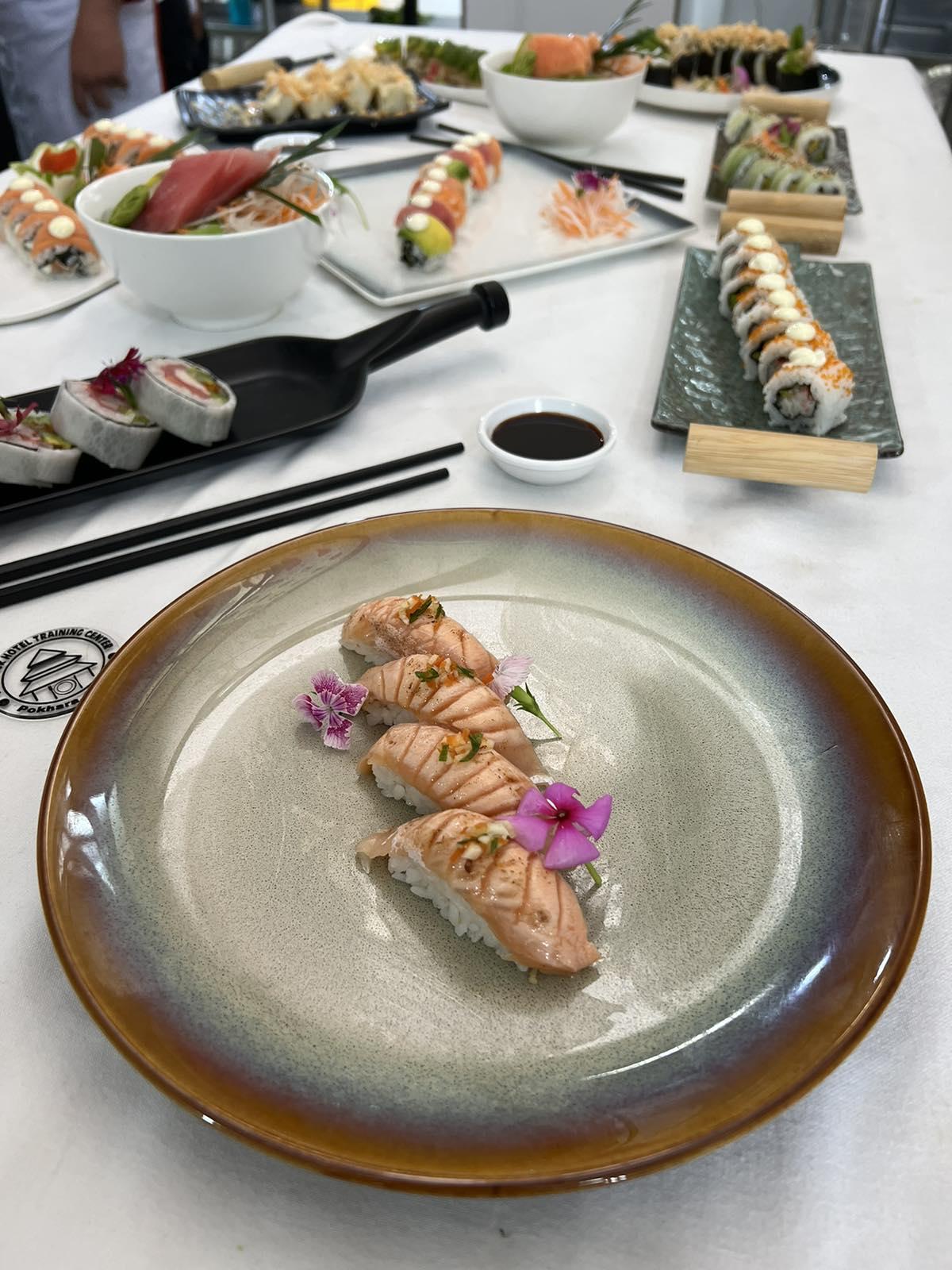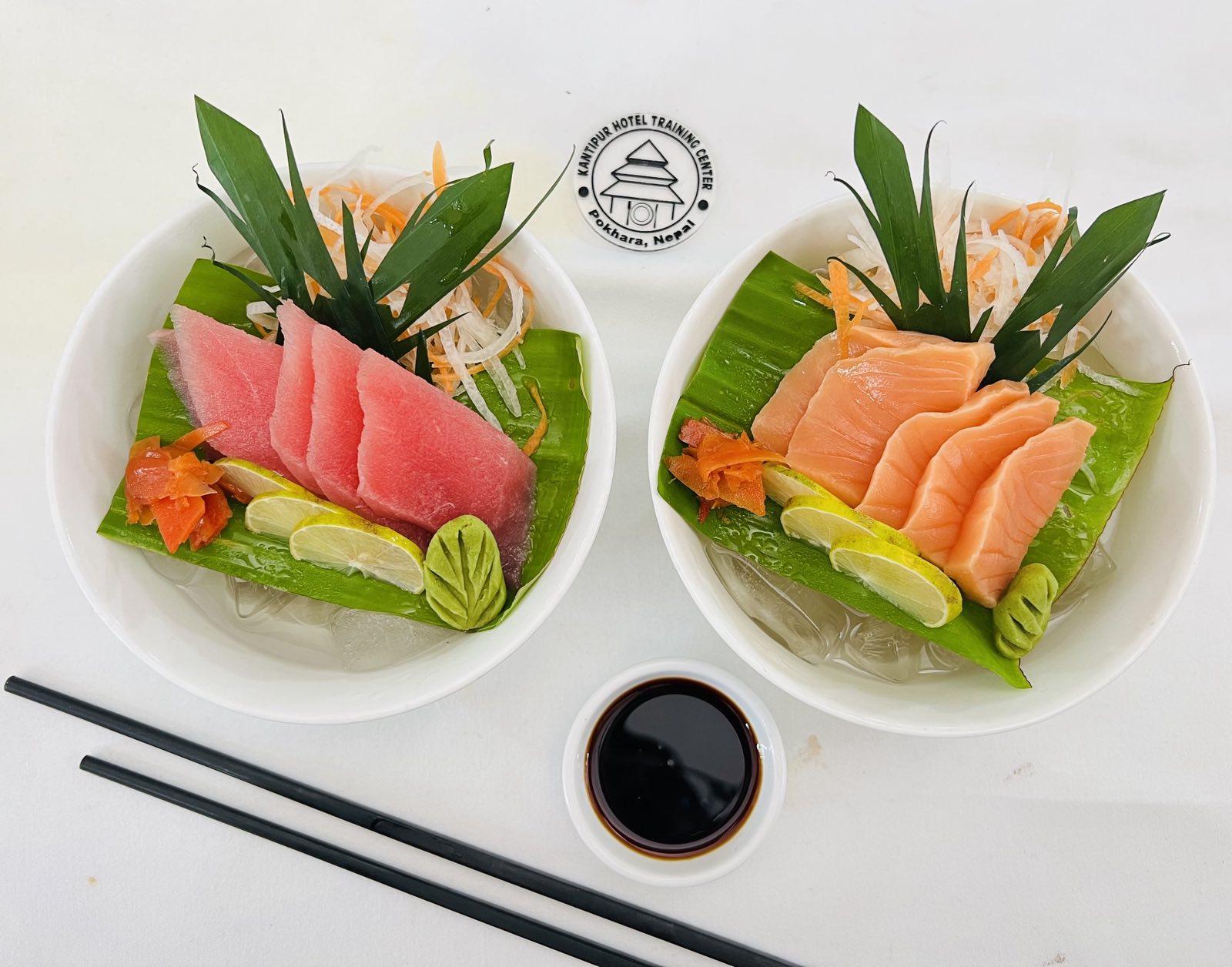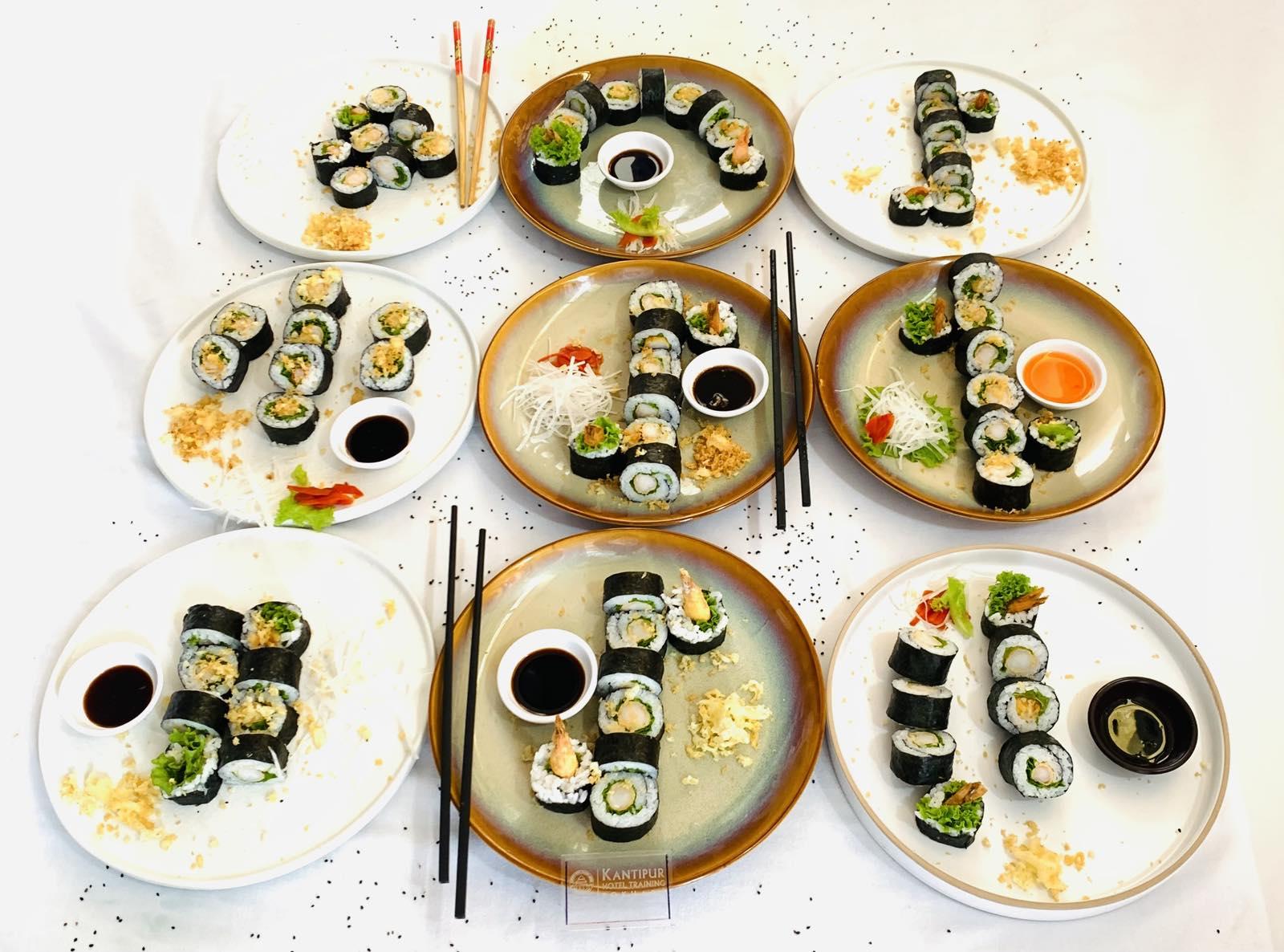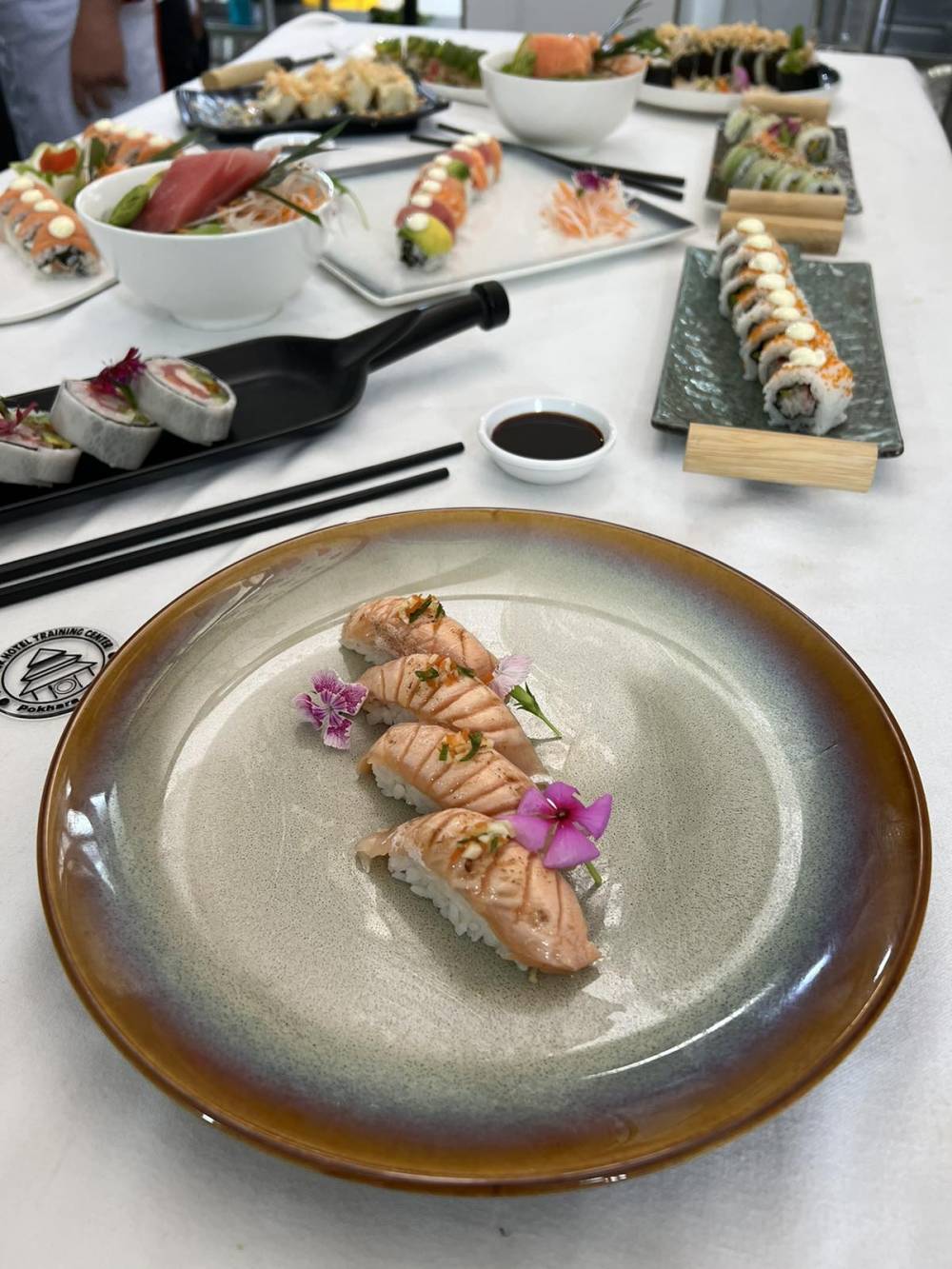Sushi is a traditional Japanese dish that typically consists of vinegared rice combined with various ingredients such as raw or cooked seafood, vegetables, and sometimes fruits. It is often wrapped in seaweed or served as bite-sized pieces. Sushi is known for its fresh flavors, artistic presentation, and the use of quality ingredients. It has become popular worldwide for its unique taste and is enjoyed in sushi bars, restaurants, and as takeout.


Sushi is a traditional Japanese dish that has a long and fascinating history dating back centuries. The origins of sushi can be traced to Southeast Asia, where fish was preserved by fermenting it with rice. This method of preservation allowed people to store fish for extended periods before consuming it.
In the 8th century, sushi made its way to Japan. The Japanese took inspiration from the Chinese method of preserving fish, but instead of fermenting the fish, they began to preserve it by wrapping it in rice and salt and allowing it to ferment for a shorter time. This technique helped preserve the fish while also imparting flavor to it.
During the Muromachi period (14th to 16th centuries), sushi evolved further. A new technique called nare-zushi emerged, where fish was wrapped in fermented rice and left to ferment for several months. The rice was discarded, and only the fish was consumed. This early form of sushi was often enjoyed as a snack or accompaniment to sake.
In the 17th century, a significant shift occurred in the sushi-making process with the invention of nigiri-zushi. This style involved placing a slice of fresh raw fish on top of a small mound of vinegared rice. The vinegared rice acted as a way to enhance the flavor and texture of the fish. Nigiri-zushi quickly gained popularity in Edo (now Tokyo), becoming a popular fast food option.
In the 19th century, Tokyo underwent rapid development, and the city's sushi scene flourished. A man named Hanaya Yohei is often credited with revolutionizing sushi during this time. He introduced the concept of an Edomae-style sushi bar, where customers could sit at the counter and watch the sushi chef prepare the sushi right in front of them. This interaction between the chef and the customer created a unique dining experience and helped establish sushi as a more formal cuisine.
In the early 20th century, sushi continued to evolve, and new variations emerged. In the 1920s, a chef named Matsumoto Yoshiichi invented the first sushi roll, known as maki-zushi. Maki-zushi involved wrapping vinegared rice and various fillings in seaweed, which was then sliced into bite-sized pieces. This innovation made sushi more accessible and portable.
After World War II, sushi gained popularity both within Japan and internationally. In the 1960s and 1970s, sushi began to spread beyond Japan's borders, particularly in the United States. Initially, sushi was primarily consumed by the Japanese immigrant population, but its popularity grew among a wider audience over time.
With globalization and advancements in transportation, sushi ingredients and techniques have become more widely available worldwide. Sushi has also undergone various adaptations and fusion with local cuisines in different countries, resulting in a diverse range of sushi styles and flavors.
Today, sushi remains a beloved culinary art form appreciated for its fresh ingredients, delicate flavors, and meticulous preparation. It has become a global cuisine, enjoyed by people from all walks of life and continues to evolve and captivate food enthusiasts around the world.























